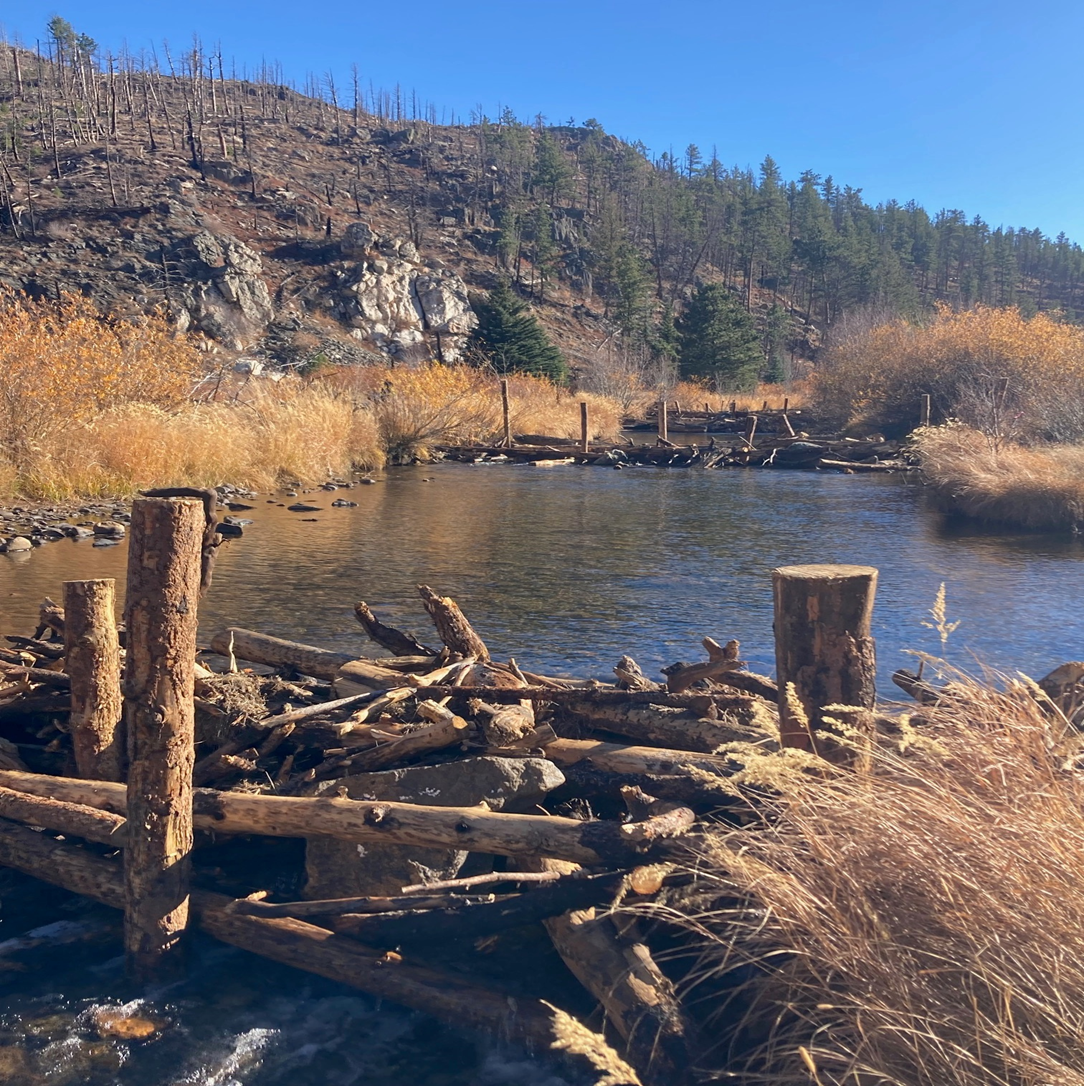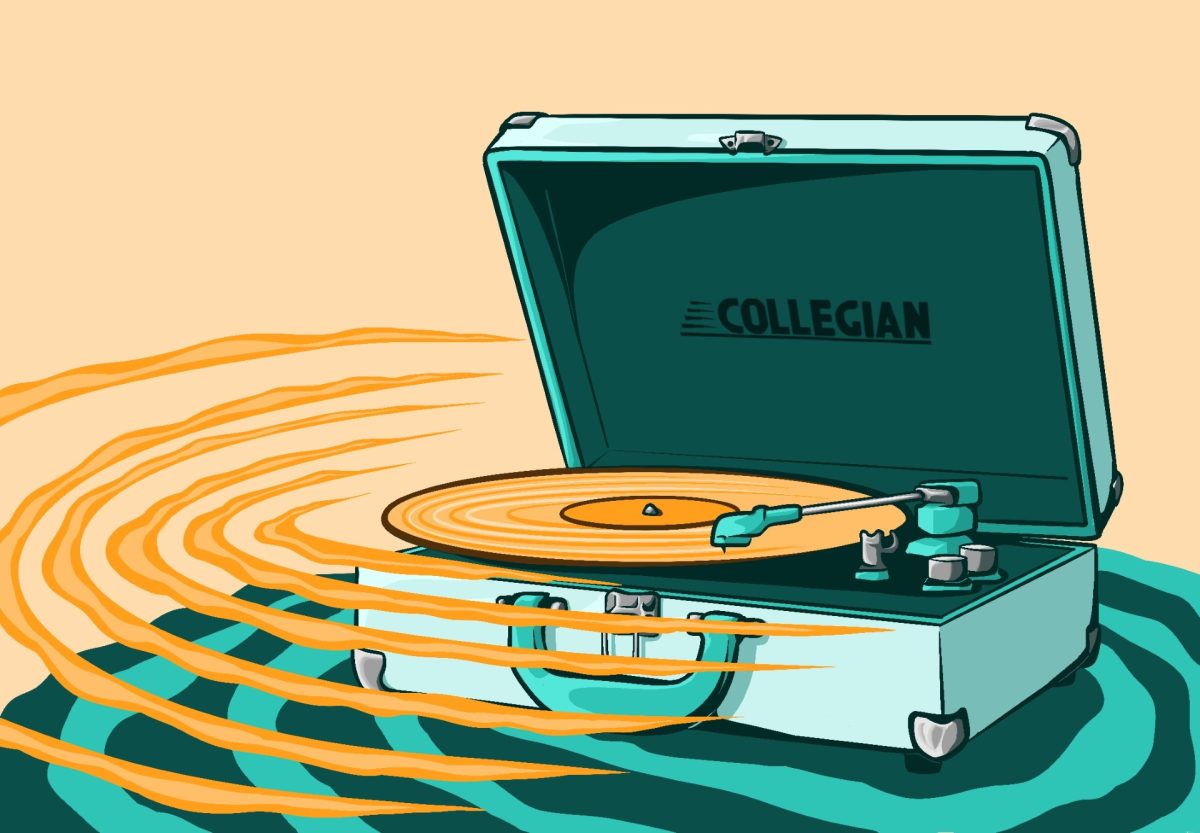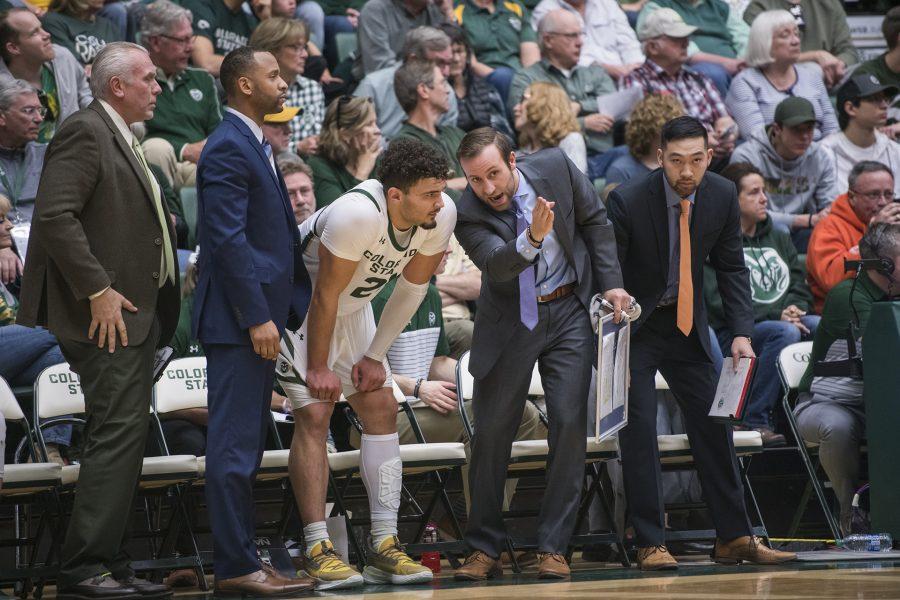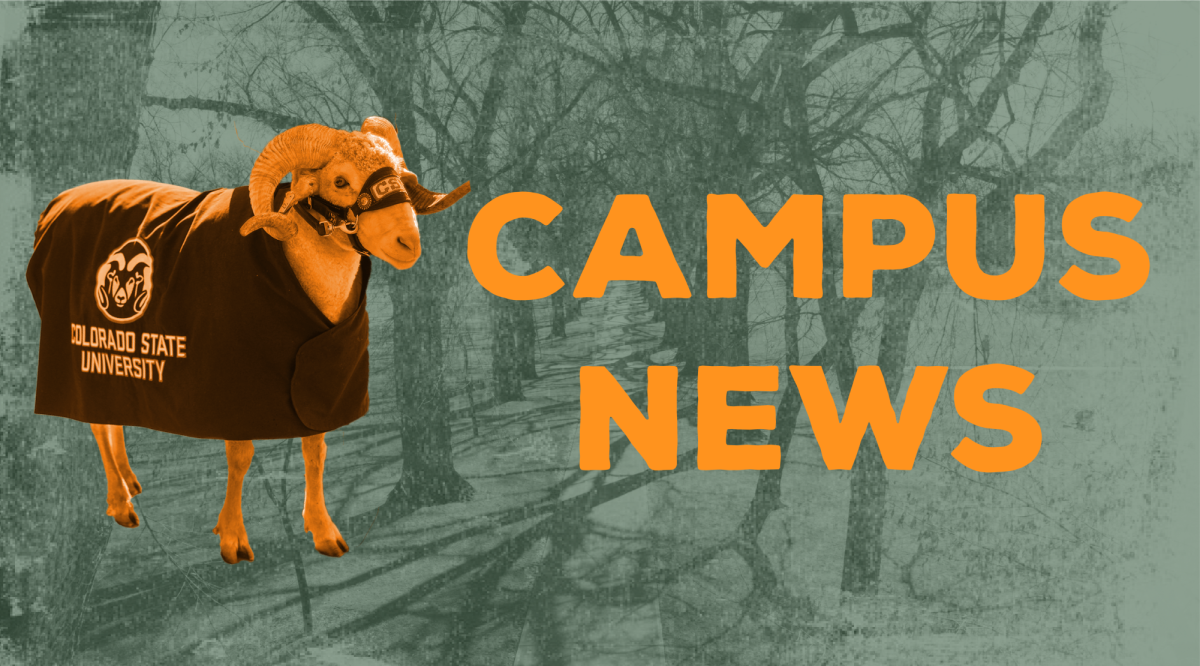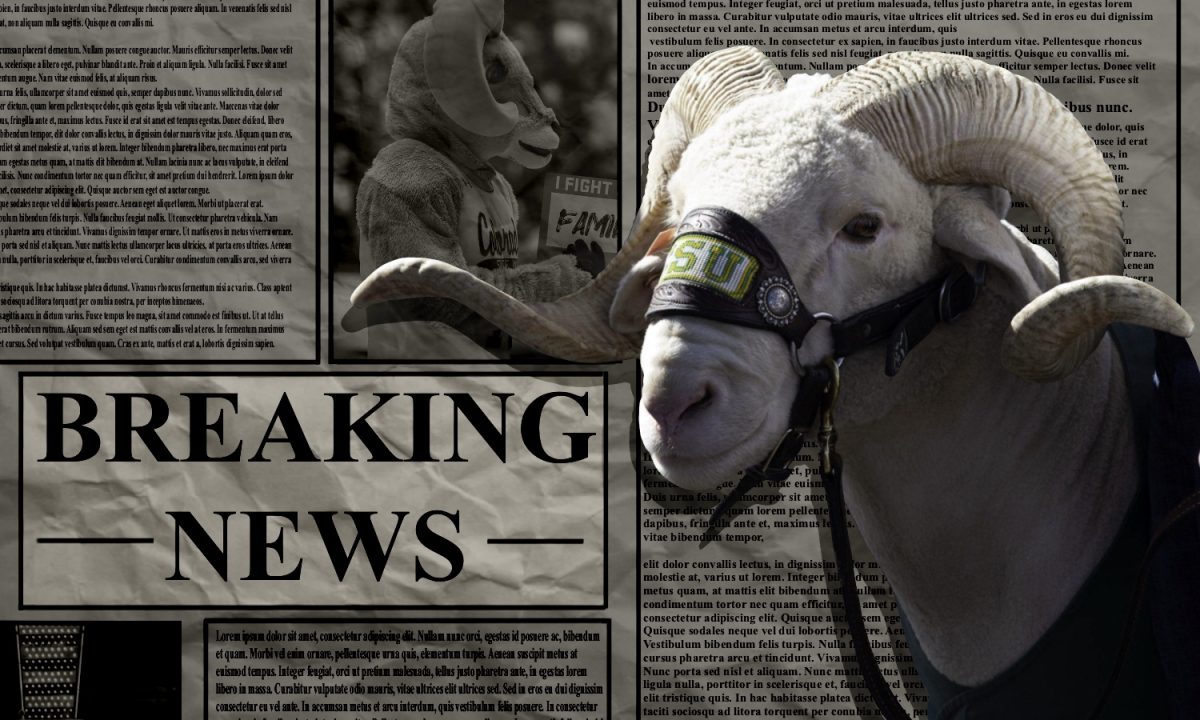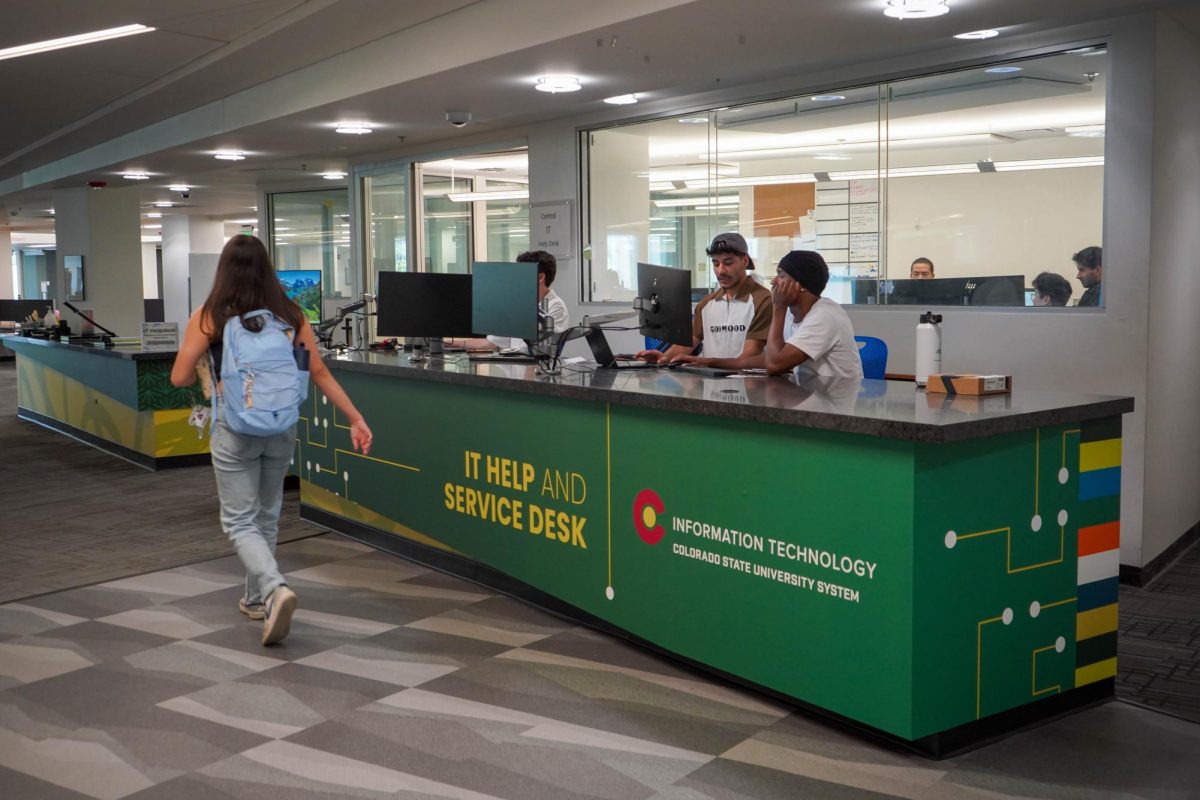How The Collegian and all of the campus dealt with a day of terror and the new America.
Silence.
That is how the Colorado State University’s campus was described the day that two planes struck the World Trade Center in New York. It was a day that many remember being eerie; the Lory Student Center was silent but filled with people packed around televisions speaking not at all or merely in hushed tones.
“Like a lot of Americans, I was just glued to the (TV) set a good deal that day as the story unfolded,” said Bob Lawrence, a former U.S. Air Force intelligence officer and political science professor at CSU during the attack. “And I got to thinking, ‘What am I going to tell my class?’”
While parts of campus were glued to television screens, The Collegian spent their day trying to further tell the story that had just rocked the world.
“The campus was a very emotional place.”
Both professors and students alike have agreed that the CSU campus fell into an eerie, somber silence that day as people across campus tried to get as much information as they could.
“The (LSC) was just quiet that day,” said Maria St. Louis-Sanchez, the editor-in-chief of The Collegian at the time. In 2001, she went by Sanchez-Traynor. “Students were surrounding TVs to see what was going on, but no one was really saying anything. It was almost like time stood still and all we could do was watch.”
Students like Zeb Carabello, the news managing editor for The Collegian at the time, remembers waking up to the news, something that was very out of the norm for his alarm clock that would wake him up to the radio.
When he finally turned on the TV, the first tower had already been hit. He watched live as the second tower was struck by another plane.
“One of my roommates was home with me, and we were just standing there in shock,” Carabello said.
Like a lot of Americans, I was just glued to the (TV) set a good deal that day as the story unfolded. And I got to thinking ‘What am I going to tell my class?’”
Bob Lawrence, former CSU political science professor
Carabello, along with other students, were faced with emails about canceled classes. Some classes, like Carabello’s international politics class, saw the professor streaming CNN and encouraging students to ask questions about the events that were unfolding.
Lawrence said he told his students that when they left class that day, they should look up at the sky for something missing.
“It’s kind of odd to look up into the sky and see no contrails because no commercial planes were flying,” Lawrence said. “That added to the sense that things had changed.”
Carabello also remembers this feeling of looking up at the sky and being astounded by its emptiness.
“It was weird looking up and never seeing planes fly over,” Carabello said.
As the day rolled on, the feeling for many across campus, especially for students, was one of despair.
“We had lived very sheltered lives; September 11 was really the biggest incident that had happened,” St. Louis-Sanchez said. “We had grown up in this little tiny cocoon for our whole lives, and it burst that day. We were dealing with this sense that this world was not safe.”
But for those like St. Louis-Sanchez and Carabello, this human response was countered with their duties as journalists.
“I ran to the newspaper as fast as I could.”
St. Louis-Sanchez said she remembers rushing into the newsroom after arriving home from Colorado Springs just that morning. She, along with many other student journalists, were already struggling with the duality of being a student and a journalist.
“We felt this duty as journalists to go and to write about it, to tell the story from a student’s perspective,” St. Louis-Sanchez said. “We were trying to deal with our own emotions of what was going on and trying to deal with our emotions as journalists at the same time.”
The work for Collegian staffers started early that day. Carabello said he remembers receiving a call from St. Louis-Sanchez only five minutes after the second building was hit.
When St. Louis-Sanchez arrived in the newsroom, she remembers there being about 10 people there. However, without being prompted or called, more and more people showed up to help out. By the end of the day, almost the entire staff had come to help.
“If you worked for the newspaper, you ran to The Collegian that morning,” St. Louis-Sanchez said. “It was kind of like Grand Central Station.”
Throughout the day, St. Louis-Sanchez and her team worked on getting the news together as best they could, pulling stories from national news outlets across the country as well as working on their own articles. The editorial “Silence envelops CSU” was published on the cover the next day, written by Carabello, with help from others on the editorial staff.
“I remember feeling a lot of pressure writing that editorial,” Carabello said. “I remember the pressure of just ‘What the hell do I write?’”
We couldn’t leave until we knew the paper was going to be out. Everyone wanted to stay there and see it through those last final minutes. We just had to be there; we felt an ownership.
Maria St. Louis-Sanchez, former Collegian editor-in-chief
He said he remembers trying to write the piece with a more optimistic outlook for his generation going forward, something expressed on the jump of the editorial, where the title read: “The challenge is ours to shape the future.”
Throughout the day, emotions ran throughout the newsroom in different ways, as student journalists grappled with the difficulty of being both a journalist and a person.
“I remember several different people breaking down throughout the day,” Carabello said.
St. Louis-Sanchez said that many of the staffers had to do what journalists have to do when covering tragic events like this: put aside their own time to process their feelings in order to get the news out first. St. Louis-Sanchez said she remembers not being able to fully deal with the events she saw until later that night.
“I remember coming home that night, and I just cried,” St. Louis-Sanchez said. “That was the first time I finally got to sit down and process it.”
Carabello said that his professional career and 9/11 itself showed him that there is a balance between being a journalist and being a human being and remembering what the role is for a journalist.
“It’s important to be intentional and zoom out sometimes and think about the big picture,” Carabello said. “As journalists it is really hard. We will always be subjective, but we will work really hard to be objective and take our emotions out of it. The newsroom was a very emotional place. The campus was a very emotional place.”
Carabello added that despite the toughness of the day, the members of The Collegian did a good job at being intentional on getting all sides of the story.
While reporters, designers and everyone else worked hard to get the paper together, almost no one left the newsroom.
- Nineteen men hijacked four fuel loaded U.S. airplanes bound for different West Coast destinations.
- American Airlines Flight 11 struck the north tower of the World Trade Center at 8:46 a.m.
- United Airlines Flight 175 struck the south tower of the World Trade Center at 9:03 a.m.
- American Airlines Flight 77 struck the Pentagon Building in Washington at 9:37 a.m.
- The south tower of the World Trade Center collapsed at 9:59 a.m. The collapse took approximately 10 seconds.
- United Airlines Flight 93 crashed into a field near Shanksville, Pennsylvania at 10:03 a.m.
- The north tower of the World Trade Center collapsed at 10:28 a.m.
- The time between the first attack and the collapse of both World Trade Center towers was 102 minutes.
- There was a total of 2,911 people killed in New York City, Washington, D.C. and outside of Shanksville, Pennsylvania.
- The attack was orchestrated by Al-Qaeda leader Osama bin Laden.
“We got there first thing in the morning, and almost all of us were there until it was sent off to the (printer) at night,” St. Louis-Sanchez said. “We couldn’t leave until we knew the paper was going to be out. Everyone wanted to stay there and see it through those last final minutes. We just had to be there. We felt an ownership.
The result was a paper that clearly showed the tragedy of the prior day’s events; a large image of the World Trade Center towers on fire with the words “TERROR IN THE U.S.” was printed on the top of the page.
And while both St. Louis-Sanchez and Carabello said that there are always things that could have been changed or done better, such as more focus on student coverage in St. Louis-Sanchez’s case, they feel that the work that they did was something to be proud of.
“I am proud of what we did that day,” St. Louis-Sanchez said. “We worked so hard. Every newspaper you ever talk to will say that’s the day they are always going to remember. But as student journalists, we knew what we had to do, and we got our job done.”
“People wanted to blame someone.”
On Sept. 12, Lawrence’s international policy class, which usually had only about 40 people, was “standing room only,” with everyone wanting to ask questions about what they had seen just 24 hours before.
What CSU saw in the following days, weeks and even months was a shift in culture. Lawrence said that many students were concerned about who had done it and what the response should be. Some, Lawrence said, felt that all Muslim individuals were somehow related or responsible, something he told them was not true.
It made us realize we weren’t safe. For who we were as college students, that was a first for us. Our world was going to be different. this changed everything. And we were right.”
Maria St. Louis Sanchez, former Collegian editor-in-chief
“In the weeks that followed, we paid attention to the U.S. response,” Lawrence said. “I remember President Bush in the ruins, and he had a bullhorn and he said something about ‘We won’t let this stand’ or ‘We will remember what has happened to us’ or something, but then he also said that we shouldn’t go off on a witch hunt regarding our Muslim minority in this country, and I thought that should be emphasized.”
Throughout the rest of the semester, Lawrence and his class followed the debate in Congress as well as President Bush’s statements and responses.
“It was a really good example of American foreign policy in action,” Lawrence said.
Carabello said that he remembers seeing a lot of anger on campus from those trying to find answers as to why this would happen.
“You could kind of just see it in a lot of people around campus,” Carabello said. “People wanted to blame someone.”
Carabello said he remembers seeing a lot of anti-Muslim sentiment and even some instances of hate crimes on campus following the incident.
St. Louis-Sanchez remembers students on campus feeling a new sense of fear in a world that they saw as now susceptible to events like the attack they had just seen.
“It made us realize we weren’t safe,” St. Louis-Sanchez said. “For who we were as college students, that was a first for us. Our world was going to be different. This changed everything. And we were right.”
In the days following, CSU and Fort Collins saw many events memorializing the killed and processing the event. Interdenominational prayer services, a CSU Reserve Officers Training Corps Retreat Ceremony, community meetings and an address from the CSU president at the time, Albert Yates, dominated the pages of The Collegian for many weeks.
“After that, everything changed.”
For many of those on campus, especially the current freshmen class, the attacks on the World Trade Center aren’t remembered. Many were not old enough to remember the event; many others had not even been born yet.
However, many agree that the inherent importance of the event is something that should be remembered, as it shocked the foundation of so many people at the time.
“It was a historic day,” St. Louis-Sanchez said. “To be honest, it had been kind of a quiet school year that year. And after that, everything changed. Our entire focus, our entire outlook on the way we saw our leaders, on the way we even did our jobs.”
“It changed everything for us, and we just never saw it coming. We didn’t know how to prepare for it because it had never happened before,” St. Louis-Sanchez added.
Lawrence said that in the aftermath, it is important that people strike a balance in how we protect ourselves and, overall, view the world.
“In this world in which we live where there are terrorists, we still have to be concerned about striking the right balance between personal privacy and individual freedom,” Lawrence said. “On the other hand, the government’s responsibility to protect us from these threats, but not going too far to establish a surveillance state or a police state.”
St. Louis-Sanchez said that the importance of the event as a whole is something to be remembered. She added that while those that didn’t see it may know that there are things that can’t be controlled and that there are “evil forces out there,” the world is not a terrible place.
“We came together after September 11 as a country,” St. Louis-Sanchez said. “We were more cohesive, maybe just for a couple of weeks, than we had ever been before. Even if you don’t know what happened, it is important to know the importance of it.”
Austin Fleskes and Ravyn Cullor can be reached at news@collegian.com or on Twitter @CSUCollegian.



